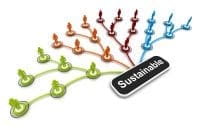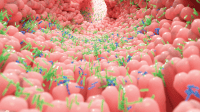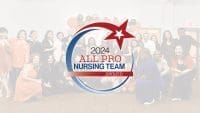News that pharmaceuticals have been found in our rivers and streams, fish, wildlife, and even our drinking water has captured our interest and concern. This isn’t a new phenomenon. Active pharmaceutical ingredients (APIs) have been in the water since humans first started using and excreting drugs. But we’re just beginning to recognize the magnitude of the problem. Drug prescriptions in this country have increased 61% over the past decade and now total about 3.4 billion annually, with retail sales of $250 billion. Nurses, who administer, dispose of, and in some cases prescribe drugs, can play a key role in developing policies and practices that help minimize the amount of pharmaceuticals that end up in the environment.
The U.S. Geological Survey has detected codeine, sulfa drugs, hormones (such as estradiol), and many other medications in a wide swath of surface waters around the country. Tissue samples of the nation’s fish reveal that these drugs are being absorbed in fish, resulting in body burdens of pharmaceuticals that may travel up the food chain. About half the country derives its drinking water from surface water sources, yet no one knows how many APIs are in circulation, nor what percentage is derived from human excretion, animal excretion from veterinary use (particularly in agriculture), disposal activities, or manufacturing activities. Drinking water standards don’t require testing for APIs.
With an aging population and delivery of more outpatient health care, nurses need to know the best ways to dispose of drugs in the home setting. A few local jurisdictions have provided guidance on pharmaceutical waste disposal from homes. While no federal regulations exist, federal guidelines do address pharmaceuticals used in homes. These guidelines instruct us to combine unused drugs with kitty litter or coffee grounds after destroying drug-identifying materials, and place the combined materials in the trash. This recommendation is meant to deter people from trash picking and dumpster diving to recover drugs for reuse or resale. In the context of pharmaceutical waste, the term “diversion” refers to absconding with unused drugs for reuse or resale. Preventing diversion is crucial for all pharmaceutical waste practices. In hospitals, drug disposal is regulated; not so in home situations.
The federal government also suggests using community drug take-back programs. In some areas, solid waste divisions of the local or county public works agency offer hazardous waste disposal opportunities. In others, police departments or community agencies have developed drug take-back programs at designated locations or during specified take-back days. While some of these programs have collected large quantities of unused drugs, many unanswered questions exist about the safety of incinerating the drugs collected. No data are available to indicate drug burning is a safe practice.
Nursing roles and considerations
Evidence: Data points are missing. The percentage of waterborne APIs resulting from disposal or excretion is unknown. Nor do we know what potentially harmful chemicals are released when drugs are incinerated. We have no evidence of differences in efficacy or health risks among the range of disposal practices in current use. As evidence-based practitioners, we must promote scientific approaches to decision-making regarding drug disposal and must use a precautionary approach at all times. Federally supported research in this area is warranted.
Prevention: Nurses can help reduce the number of drugs in circulation. For example, nurse practitioners can prescribe smaller drug quantities, particularly with first-time prescriptions, thus preventing an excess of unused drugs if a patient has a bad reaction or decides to discontinue the drug. All nurses can encourage physicians to do the same. Also, we should consider whether complementary care, such as therapeutic massage and stress-reduction techniques, could decrease the need for drugs.
Advocacy: Nurses can advocate for improved formulations of pharmaceuticals that apply “green chemistry” strategies, as well as development of individualized, highly targeted drugs. Such formulations could lead to safer and more efficient chemicals (requiring a lower quantity). Nurses also can collaborate with organizations (such as environmental organizations) and governmental regulating bodies.
In the coming years, we can expect the number of unused pharmaceuticals to continue to grow. Nurses should be at the forefront for demanding the creation and use of the best science to develop safe disposal methods—for human health and the health of our ecosystems.
Pamela M. Ortner is a Visiting Partner at the University of Michigan Center for Occupational Health and Safety Engineering exploring drug disposal, Ann Arbor, and Performance Improvement Coordinator at St. Joseph Mercy Hospice of Washtenaw County, Ann Arbor. Barbara Sattler is a Professor in the Masters of Public Health Program at the University of San Francisco in the School of Nursing and Health Professionals; she is also a board member of the Alliance of Nurses for Healthy Environments (www.enviRN.org).


















